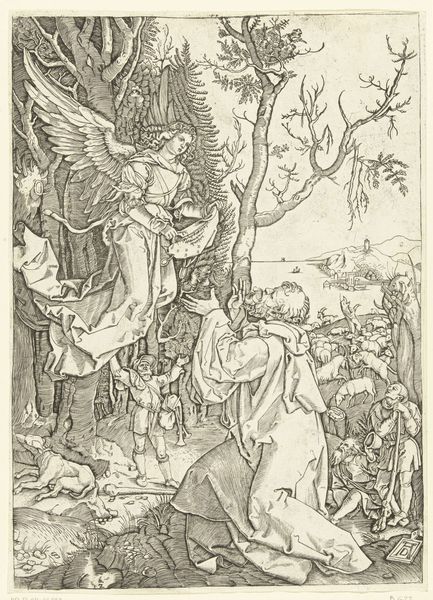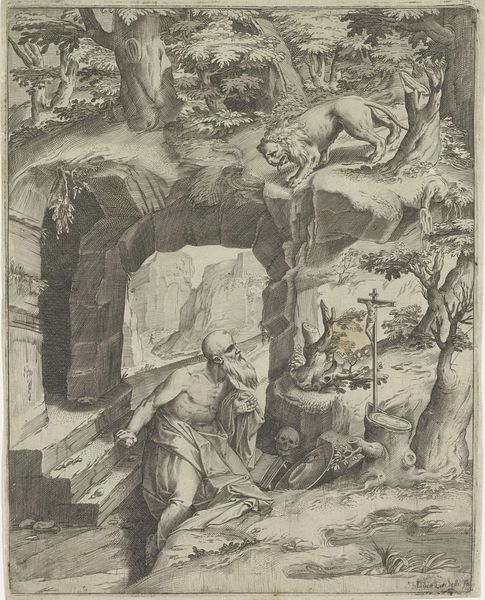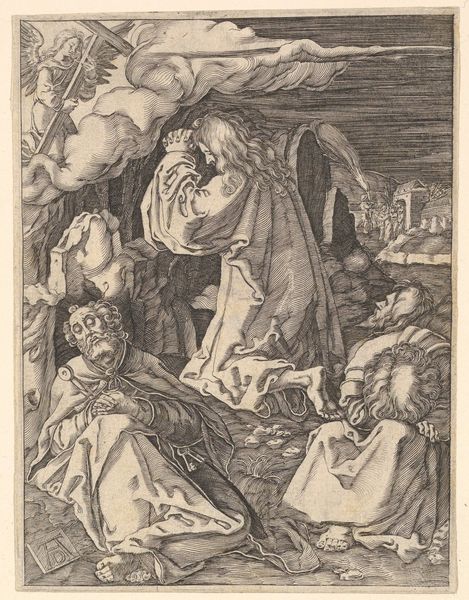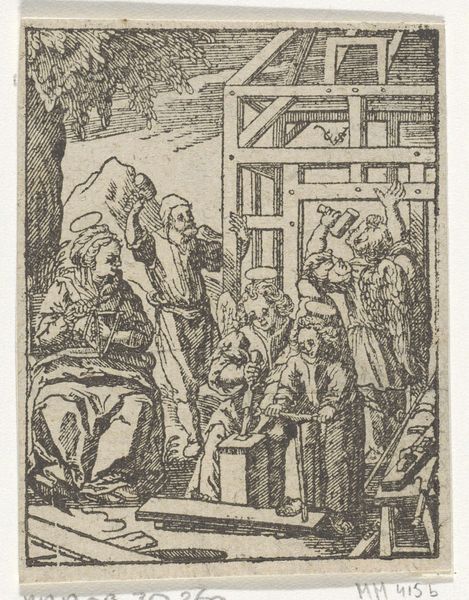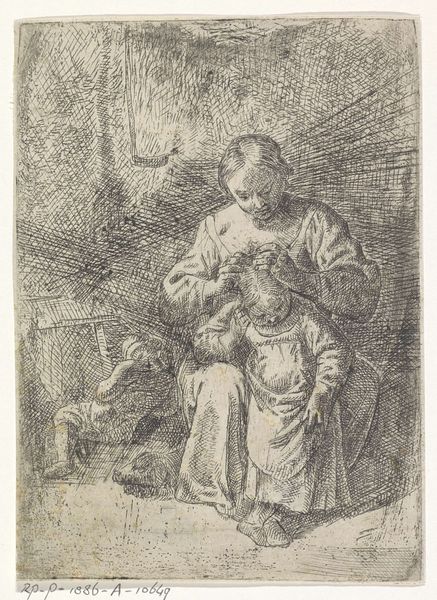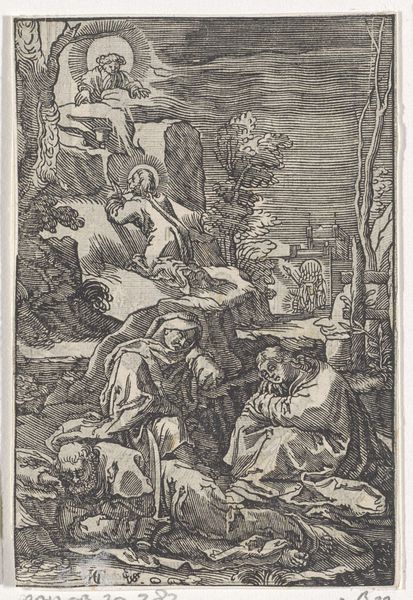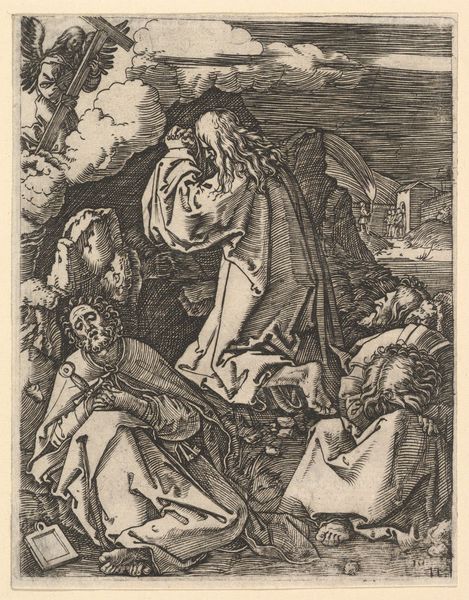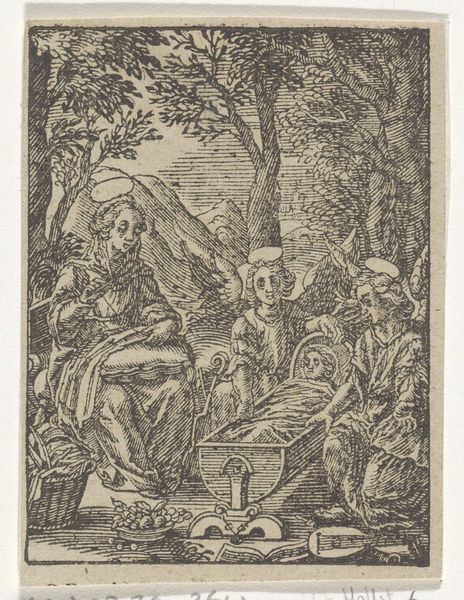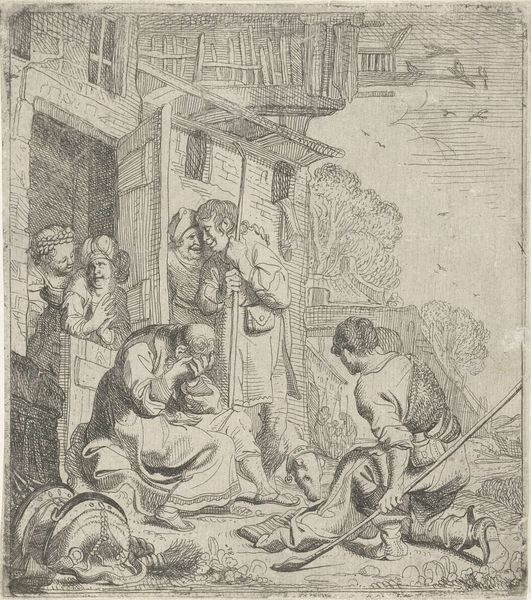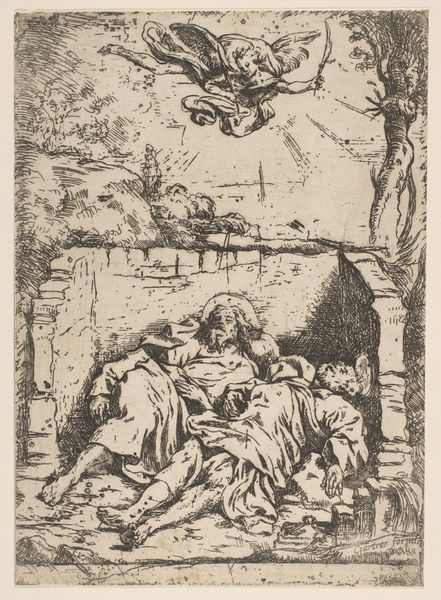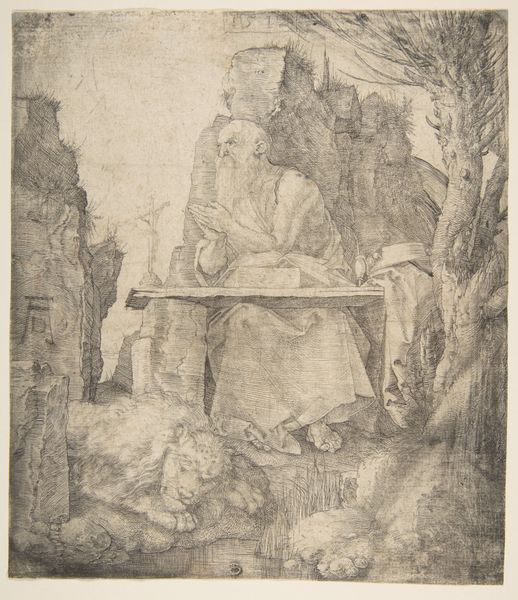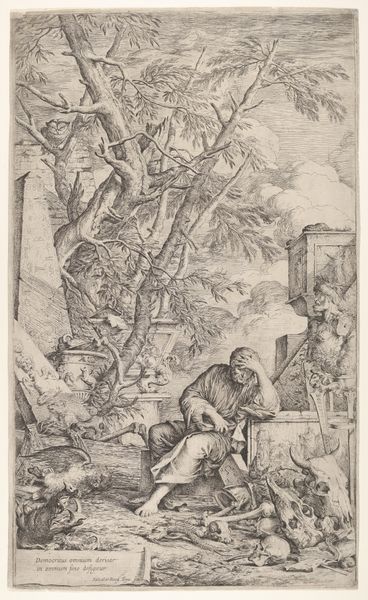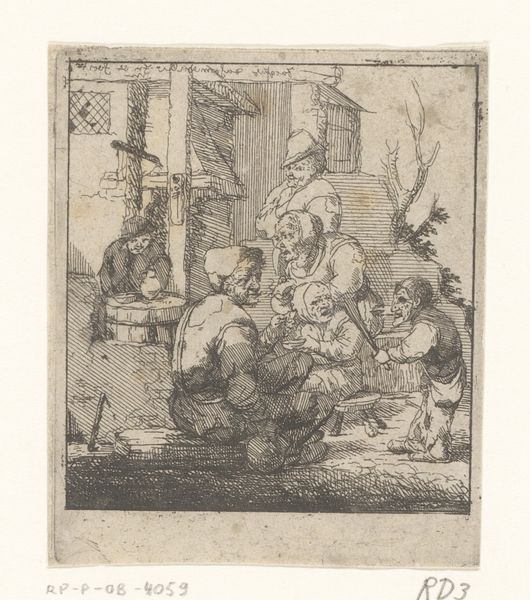
drawing, print, etching, intaglio
#
drawing
#
toned paper
#
light pencil work
#
ink drawing
#
narrative-art
#
baroque
# print
#
pen sketch
#
etching
#
intaglio
#
pencil sketch
#
personal sketchbook
#
ink drawing experimentation
#
pen-ink sketch
#
pen work
#
sketchbook drawing
#
genre-painting
Dimensions: height 126 mm, width 94 mm
Copyright: Rijks Museum: Open Domain
Curator: Here we have an etching from the period of 1648-1745, titled “Father with Child on Lap in Interior,” currently held at the Rijksmuseum. It’s an anonymous work, but the scene speaks volumes. Editor: My first impression is one of intense domesticity. There’s a certain enclosed quality, maybe a bit stifling, captured through the detailed hatching. It gives a sense of how daily life transpired for people during this period. Curator: Indeed. The lack of attribution raises questions. Was this work dismissed as a mere genre scene, or did the artist intentionally remain anonymous due to social constraints? Consider the position of the figures - the mother figure watching, the huddled posture of someone grinding on a small stool on the right. The etching illustrates the dynamics of family and domestic work. The labour here is not just the literal chores represented, but also the labour of care. Editor: And let's not overlook the materiality of it. It’s an etching, an intaglio print. That suggests a level of accessibility. Prints like this could be circulated more widely than paintings, suggesting a broader audience engagement with these images of daily life. Look at the father figure; his hands seem to hold the baby with so much ease. Are we looking at idealized representation or lived reality, I wonder. Curator: Precisely, and that's where its social importance really comes to life for us. It also invites viewers to project their own feelings and lived experiences regarding motherhood, labour, and access into the print. Gender is definitely being performed here; care, in those times, seems to have always belonged to the domestic space. Editor: Thinking about the materials and labor involved – the copperplate, the acid, the press. All part of the means of production necessary to disseminate an image like this. Curator: Yes. The act of reproducing and consuming the artwork becomes intertwined with its very subject: how labor, familial roles and social space function in society. And here we find those considerations condensed into one vivid scene. Editor: Examining the social, historical, and artistic processes really allows us to interpret and appreciate what initially might appear like a casual moment in an anonymous household. Curator: Absolutely. We find ourselves delving deeper, beyond the visual to comprehend the nuances of the artist's place in time.
Comments
No comments
Be the first to comment and join the conversation on the ultimate creative platform.

